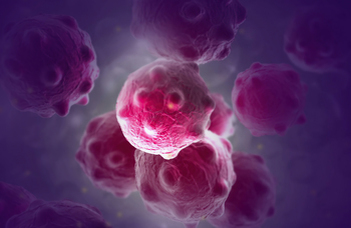A novel strategy was found to cure the most lethal types of cancer

A considerable number of cancers in humans are caused by changes in the genetic material, that is, DNA mutations. Over 600 cancer-causing mutated genes (or oncogenes) are known at present. The most important of these are connected to the RAS gene, whose mutations can be detected in 30 percent of all human tumours. They can be associated with human carcinomas that are the hardest to treat (namely pancreatic ductal adenocarcinoma, colorectal adenocarcinoma, and lung adenocarcinoma).
For about 30 years, researchers have been trying to bind small-molecule inhibitors to mutant RAS proteins, yet with little success until now. Although recently some molecules (ARS-853, ARS-1620) have been discovered that bind covalently (that is, very strongly) to the RAS protein,
most drug molecules (such as the currently used antibiotics) do not bind covalently to the target molecule.
ARS molecules are, therefore, not optimal drug candidates.
The ELTE PIT Bioinformatics Group headed by Professor Vince Grolmusz has proposed a fundamentally new method for the treatment of cancer associated with mutations in RAS proteins. RAS mutations prevent the GAP protein from binding to the RAS molecule. Consequently, they open up the way for uncontrolled cell growth, that is, the disease. According to ELTE researchers, molecules are needed to glue together the RAS and GAP molecules. Accordingly, they have been looking for small molecules that can serve as good “glue” to be entered between RAS and GAP molecules placed suitably close to each other.
The figure below shows the artificially created RAS-GAP configuration, in which the scientists searched for and found well-binding molecules to be placed in the gap between the two molecules. The red vector ‘v’ demonstrates the artificially generated shift.

ELTE researchers, in extensive co-operation with several Hungarian institutions (KINETO Lab Ltd., National Institute of Oncology, Semmelweis University, Budapest University of Technology, HUN-REN Institute of Molecular Life Sciences, Uratim Ltd.) have proven that with the new method, it is possible to find molecules that can serve as potent drug candidates. The description of the new molecules and the justification of their effectiveness were published in the International Journal of Molecular Sciences on 22 February.
Based on the preliminary results, the best two small, gluing molecules identified with the new Hungarian method can match the best molecules of this kind discovered so far worldwide. The researchers are confident that by continuing the work, they will be able to find new drugs that are effective against the most lethal carcinomas and have few side effects, since the method does not interfere with the basic mechanisms of cell division (unlike today’s chemotherapy interventions), but restores the normal physiological state.
Source of the image: Getty Images

